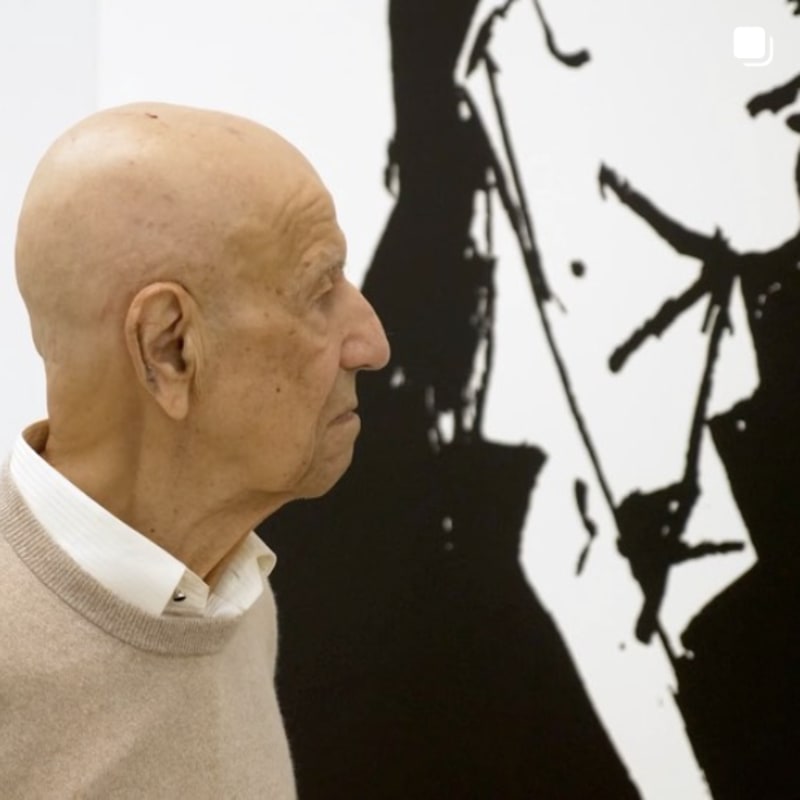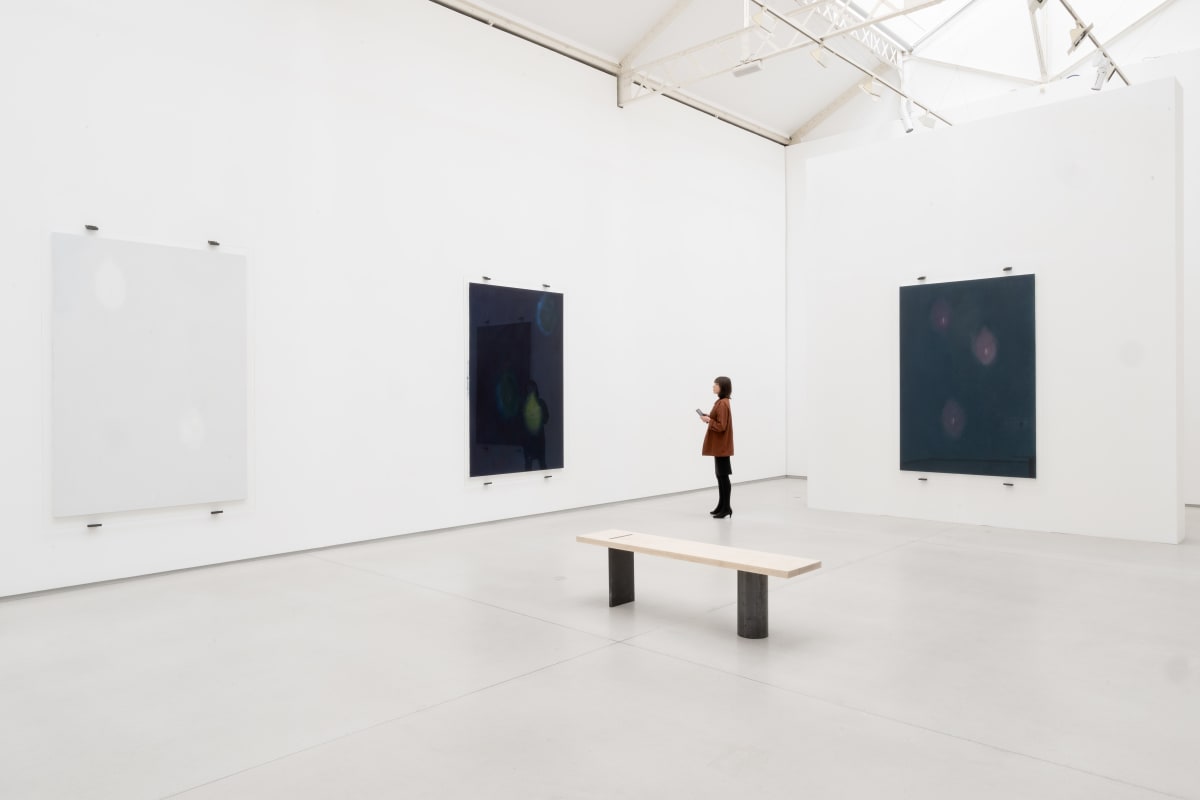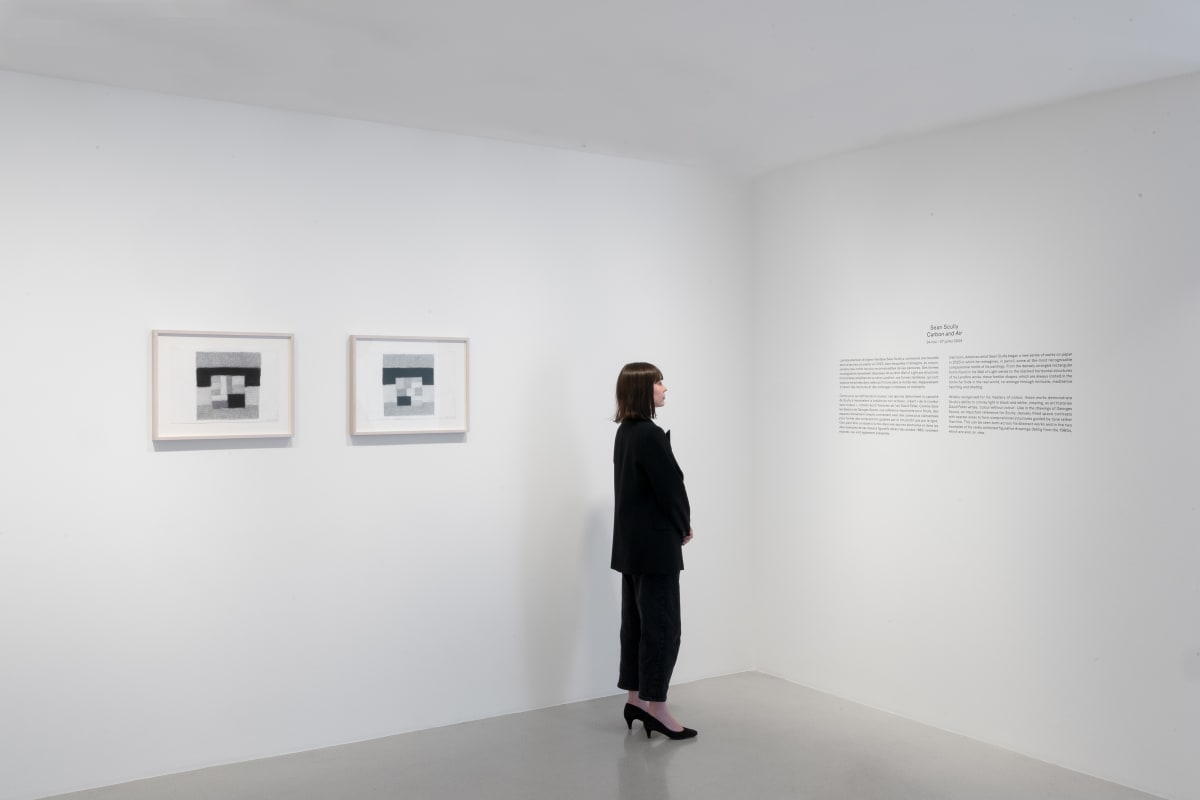The oeuvre of the German film maker Harun Farocki (who is presently a visiting professor at the Akademie der Bildenden Künste in Vienna) now comprises almost 100 feature films, essay films, documentaries, and installations. Farocki explores global, economic, social, and cultural developments in his works. Our Salzburg exhibition will present Farocki's trilogy Eye/Machine I-III, produced between 2000 and 2003, as well as last year's installation On Construction of Griffith's Films.
In the video installations Eye/Machine I, II, III (2000-2003), Farocki deals with the possibilities of intelligent image processing. He focusses on identity-finding and monitoring procedures that were originally developed for military purposes and now contribute to the fact that machines can operate in civil areas without the assistance of humans. To illustrate this connection between the disappearance of manual labour and the abolition of eye labour, Farocki uses recordings from research institutions, film archives, and advertisement departments; he interrelates and compares them in many different ways.
All works presented are double projections. Harun Farocki himself describes their specific features as follows: »In a double projection, there is succession as well as simultaneity, the relation of an image to the one succeeding it as well as to the one next to it. (…) Imagine three double bonds jumping back and forth between the six carbon atoms of a benzole ring; I imagine the relation of an element on an image trace to the one succeeding it or next to it to be equally ambiguous.« Therefore, the coexistence of the projections cannot define the relation of the presented images once and for all. It is up to the viewer to interlink the elements that jump back and forth.
In the Annex, we will present an artist proof of this installation of which three editions exist. They have already been incorporated in the collections of the Zentrum für Kunst und Medientechnologie Karlsruhe (ZKM), the Museu d'Art Contemporani de Barcelona (MACBA), and the Neue Nationalgalerie Berlin.
In his installation On Construction of Griffith's Films, Harun Farocki takes up a sequence from D. W. Griffith's film Intolerance (1916). It shows a dialogue between a man and a woman, filmed and edited as a shot and a countershot. Farocki reproduces this sequence on two monitors. The narrative form of a shot and countershot later became a common method for showing film dialogues, but was still new in Intolerance. A few years earlier, Griffith still narrated in the form of sequence shots: in The Lonedale Operator (1911), for instance, there are only cuts when the scene is changed. In Intolerance, however, the camera itself already constitutes the space by means of the the section it captures.
»My intention was to create a film laboratory, to show as much as possible of the structure of a film, a film genre, or a style with as few interventions as possible. With the figure of a shot and countershot that has now existed for ninety years and occurs in almost every film and every sequence, the narrated space is divided in two parts. I wanted to demonstrate this disassembly by showing the shot and countershot images on two different monitors. Starting with Griffith, I worked on tracing such separations throughout film history for a long time. The first example in this series was a sequence from Griffith's Intolerance from 1916. This sequence edged out all others« (Harun Farocki).
The installation On Construction of Griffith's Films, of which there are also three editions, was first shown at the Berlinale 2006 and then (2006/2007) at the group exhibition Kino wie noch nie (Generali Foundation Vienna and Akademie der Künste Berlin).
Harun Farocki was born in 1944 in Neutitschein (located in the part of Czechoslovakia that was then annexed by Germany). He studied from 1966 to 1968 at the Deutsche Film- und Fernsehakademie Berlin. Farocki was an editor and author of the magazine Filmkritik for ten years. Since 1974, Farocki has lectured in Hamburg, Munich, Dusseldorf, Stuttgart, Vienna, Berlin, Berkeley and other cities. His works have increasingly been shown at international art institutions since the mid-nineties. Thus, the Frankfurter Kunstverein (2001), the Stedelijk Museum voor Actuele Kunst Gent (2002), the Institute of Contemporary Arts London (2003), the ZKM Karlsruhe (2004), Index - The Swedish Contemporary Art Foundation Stockholm (2006), and the Museum Moderner Kunst Wien (2007) have held solo exhibitions of Harun Farocki.
This year, Harun Farocki is taking part in Documenta XII in Kassel with the installation Deep Play.
Films and installations (selection): Die Worte des Vorsitzenden [The Words of the Chairman] (1968), Zwischen zwei Kriegen [Between Two Wars] (1978), Etwas wird sichtbar [Before Your Eyes] (1981), Peter Lorre - das doppelte Gesicht [The Double Face of Peter Lorre] (1984), Wie man sieht [As You See] (1986), Bilder der Welt und Inschrift des Krieges [Images of the World and Inscription of War] (1988), Leben - BRD [How to Live in the FRG] (1990), Was ist los? [What's Up?] (1991), Videogramme einer Revolution [Videograms of a Revolution] (1992) (with Andrei Ujica), Arbeiter verlassen die Fabrik [Workers Leaving the Factory] (1995). Schnittstelle [Interface] (1995), Der Auftritt [The Appearance] (1996), Die Bewerbung [The Application] (1997), Stilleben [Still Life] (1997), Ich glaubte Gefangene zu sehen [I Thought I was Seeing Convicts] (2000), Die Schöpfer der Einkaufswelten [The Creators of the Shopping Worlds] (2000), Auge/Maschine [Eye/Machine] (2001), Auge/Machine II [Eye/Machine II] (2002), Erkennen und Verfolgen [War at a Distance] (2003), Auge/Maschine III [Eye/Machine III] (2003), Gegen-Musik [Counter-Music] (2004), Nicht ohne Risiko [Not without Risk] (2005), Aufstellung [Lineup] (2005), Ausweg [Way Out ] (2005), Zur Bauweise des Films bei Griffith [On Construction of Griffith's Films] (2006), Vergleich über ein Drittes [Comparison via a Third] (2007), Deep Play (2007).


Harun Farocki: Eye Machine I–III & On Construction Of Griffith's Films, Galerie Thaddaeus Ropac Salzburg, 2007
/
Overview
In the video installations Eye/Machine I, II, III (2000-2003), Farocki deals with the possibilities of intelligent image processing.
The oeuvre of the German film maker Harun Farocki (who is presently a visiting professor at the Akademie der Bildenden Künste in Vienna) now comprises almost 100 feature films, essay films, documentaries, and installations. Farocki explores global, economic, social, and cultural developments in his works. Our Salzburg exhibition will present Farocki's trilogy Eye/Machine I-III, produced between 2000 and 2003, as well as last year's installation On Construction of Griffith's Films. In the video installations Eye/Machine I, II, III (2000-2003), Farocki deals with the possibilities of intelligent image processing. He focusses on identity-finding and monitoring procedures that were originally developed for military purposes and now contribute to the fact that machines can operate in civil areas without the assistance of humans. To illustrate this connection between the disappearance of manual labour and the abolition of eye labour, Farocki uses recordings from research institutions, film archives, and advertisement departments; he interrelates and compares them in many different ways. All works presented are...












































































































































































